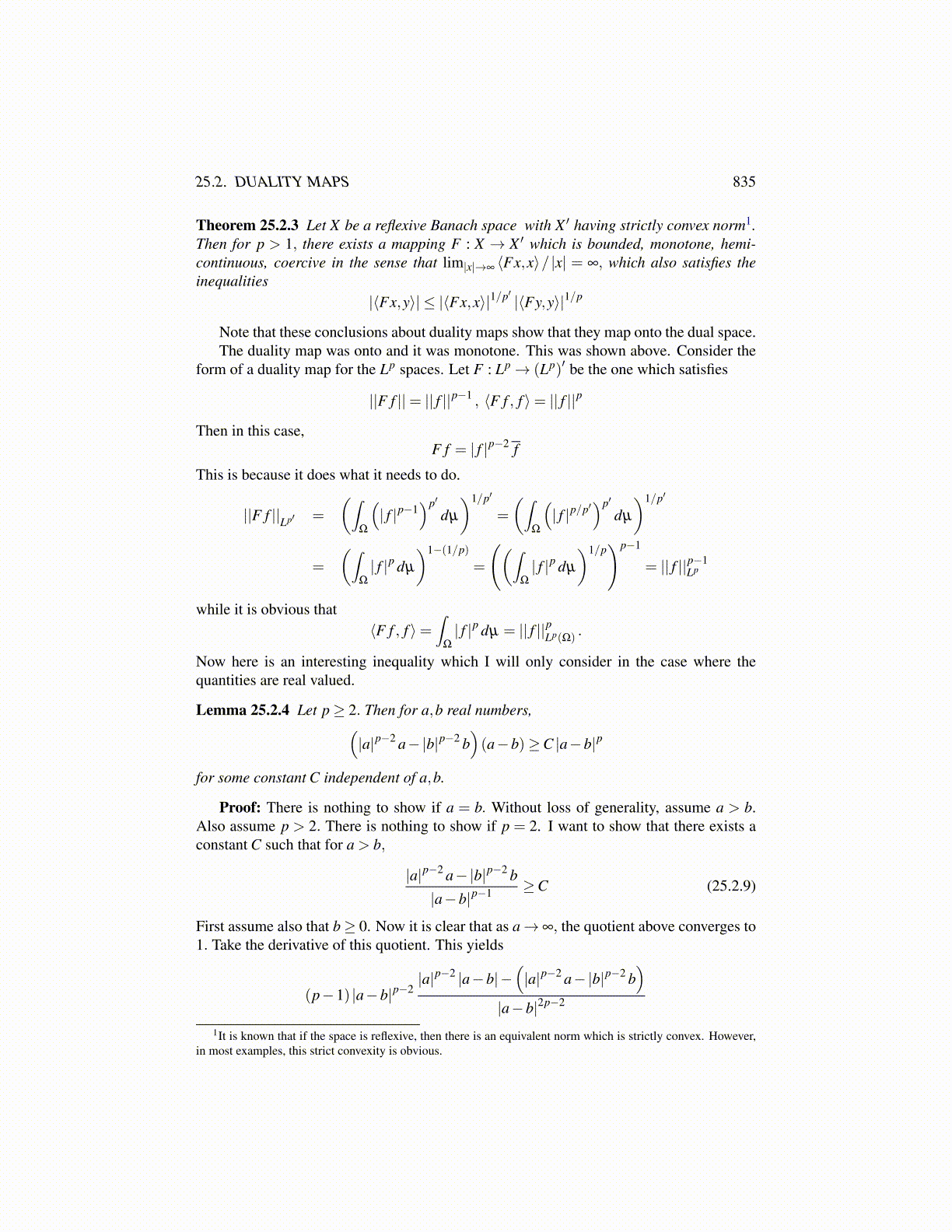
25.2. DUALITY MAPS 835
Theorem 25.2.3 Let X be a reflexive Banach space with X ′ having strictly convex norm1.Then for p > 1, there exists a mapping F : X → X ′ which is bounded, monotone, hemi-continuous, coercive in the sense that lim|x|→∞ ⟨Fx,x⟩/ |x| = ∞, which also satisfies theinequalities
|⟨Fx,y⟩| ≤ |⟨Fx,x⟩|1/p′ |⟨Fy,y⟩|1/p
Note that these conclusions about duality maps show that they map onto the dual space.The duality map was onto and it was monotone. This was shown above. Consider the
form of a duality map for the Lp spaces. Let F : Lp→ (Lp)′ be the one which satisfies
||F f ||= || f ||p−1 , ⟨F f , f ⟩= || f ||p
Then in this case,F f = | f |p−2 f
This is because it does what it needs to do.
||F f ||Lp′ =
(∫Ω
(| f |p−1
)p′
dµ
)1/p′
=
(∫Ω
(| f |p/p′
)p′
dµ
)1/p′
=
(∫Ω
| f |p dµ
)1−(1/p)
=
((∫Ω
| f |p dµ
)1/p)p−1
= || f ||p−1Lp
while it is obvious that⟨F f , f ⟩=
∫Ω
| f |p dµ = || f ||pLp(Ω).
Now here is an interesting inequality which I will only consider in the case where thequantities are real valued.
Lemma 25.2.4 Let p≥ 2. Then for a,b real numbers,(|a|p−2 a−|b|p−2 b
)(a−b)≥C |a−b|p
for some constant C independent of a,b.
Proof: There is nothing to show if a = b. Without loss of generality, assume a > b.Also assume p > 2. There is nothing to show if p = 2. I want to show that there exists aconstant C such that for a > b,
|a|p−2 a−|b|p−2 b
|a−b|p−1 ≥C (25.2.9)
First assume also that b≥ 0. Now it is clear that as a→∞, the quotient above converges to1. Take the derivative of this quotient. This yields
(p−1) |a−b|p−2|a|p−2 |a−b|−
(|a|p−2 a−|b|p−2 b
)|a−b|2p−2
1It is known that if the space is reflexive, then there is an equivalent norm which is strictly convex. However,in most examples, this strict convexity is obvious.